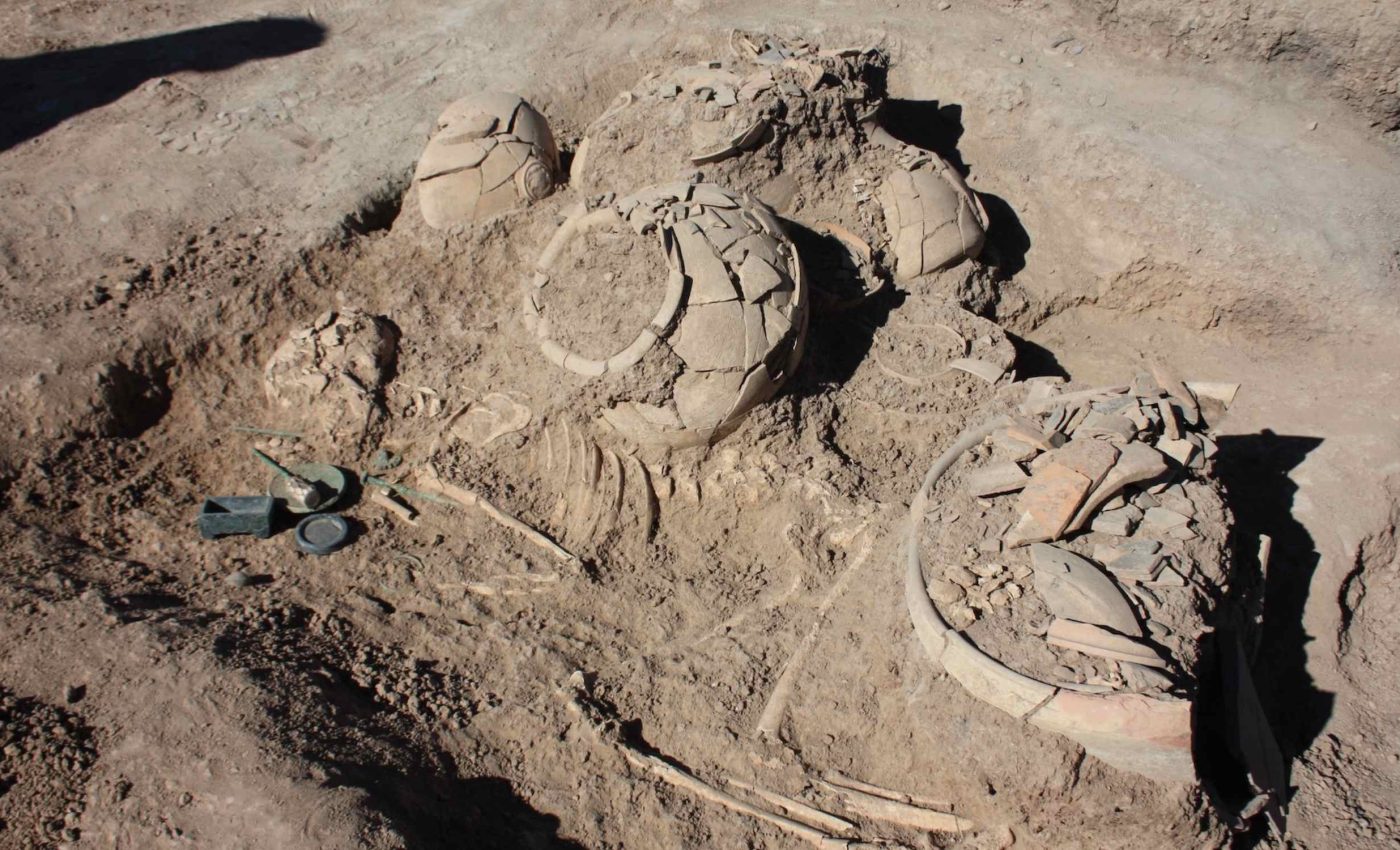
Archaeologists find a luxurious 4,000-year-old tomb for a teenager with gold jewelry and mysterious seals
At Tepe Chalow in northeastern Iran, archaeologists have documented an ornate Bronze Age tomb belonging to a teenage girl. The grave includes jewelry, carved stone containers, and multiple seals that suggest authority and exchange.
Known as Grave 12, the tomb dates to the early second millennium BCE and is the richest burial yet found at the site, with 34 distinct objects recovered.
What the grave holds
The study was led by Ali A. Vahdati of the Iranian Ministry of Cultural Heritage, Tourism and Handicrafts in Bojnord, with colleagues. Their collaboration brings together Iranian and European scholarship to a site that has quietly reshaped how scholars map Bronze Age Iran.
Objects from the grave span gold rings and earrings, two ivory pins, bronze ornaments, and an array of stone pieces. The group also includes finely made pottery typical of the region’s Bronze Age styles.
One chlorite cosmetic container bears snakes and scorpions carved in low relief, a motif seen across eastern Iran. A small seal near the neck depicts two feet with a circle and semicircle inside a circular frame.
The body lay in a crouched position on the right side, hands near the face, facing southeast. Pottery vessels were set behind the back, above the head, and below the feet, creating a clear, repeated pattern in this cemetery.
Seals as Bronze Age signatures
“Seals in this context symbolize ownership and participation in trade networks,” said Vahdati. A stamp seal is a small engraved object pressed into wet clay to leave a mark that stands for a person, office, or institution.
In Bronze Age societies, seals often functioned like signatures on containers, storerooms, and shipments.
Several seals buried in one grave suggest more than family wealth. They point to participation in the handling of goods, the management of property, or access to administrative spaces.
This is not a loose guess. In many ancient settings, seals cluster around people who supervised storage, measured rations, or warranted the movement of items across checkpoints.
Chalow in the Bronze Age world
Archaeologists situate Tepe Chalow within the Bactria-Margiana Archaeological Complex (BMAC), a broad cultural horizon that reached from the Murghab delta of Turkmenistan into northeastern Iran.
A joint Iranian Italian campaign first reported the cemetery and its BMAC, or Greater Khorasan Civilization, materials after the 2011 season.
The Greater Khorasan Civilization emerged at the end of the third millennium BCE. It spread across oases and valleys stretching into northern Afghanistan and Uzbekistan. Its settlements tended to expand horizontally along water, not vertically.
Trade moved prized stones and metals along these corridors. Mesopotamian records and archaeological finds document imports such as lapis lazuli from Afghanistan and chlorite vessels from eastern Iran during the third and second millennia BCE. These finds place the Iranian Plateau squarely at a crossroads.
Centuries later, parts of these east west routes would be woven into what historians call the Silk Roads, the long networks linking Central Asia, Inner Asia, and South Asia.
A teenager among elites
The person in Grave 12 died before adulthood, yet the goods suggest elite standing. That combination raises questions about how status moved through families, households, and local communities.
Grave clustering at Chalow suggests family plots, with specific sites and objects reserved for select members.
In several Chalow graves, a large vessel at the feet held special items, from seals to metal containers, reinforcing distinctions within the group.
Gold, carved stone, and elaborate pins do more than shine. They signal access to materials and makers tied into regional exchange, showing that even a smaller settlement could command resources beyond its immediate fields.
The imagery on the chlorite container and the seal with human feet may encode identity or office. Without texts, meaning remains debated, but consistent placement and choice of motifs show clear social cues at the time.
Probing metals, ceramics, and seals
Radiocarbon dates from a nearby grave at Chalow, in the range 2310 to 2130 BCE, align with the authors’ proposed window for Grave 12 and help anchor the cemetery in the early second millennium BCE
Further work will focus on the grave seals themselves. Metal studies can track alloy recipes and workshop habits, while ceramic and stone analyses can connect raw materials to source regions.
Isotopic sampling of human and animal remains, when available, can test diet and mobility. Combined with seal typologies and pottery comparisons, that evidence can tighten the picture of who moved goods, who stored them, and who signed off on their flow.
Tepe Chalow’s cemetery, with its careful arrangements and rich clusters, now provides one of the clearest windows onto northeastern Iran’s Bronze Age.
That window is sharp enough to show a young person tied to power, wealth, and the practical tools of exchange.
The study is published in Iran.
—–
Like what you read? Subscribe to our newsletter for engaging articles, exclusive content, and the latest updates.
Check us out on EarthSnap, a free app brought to you by Eric Ralls and Earth.com.
—–













